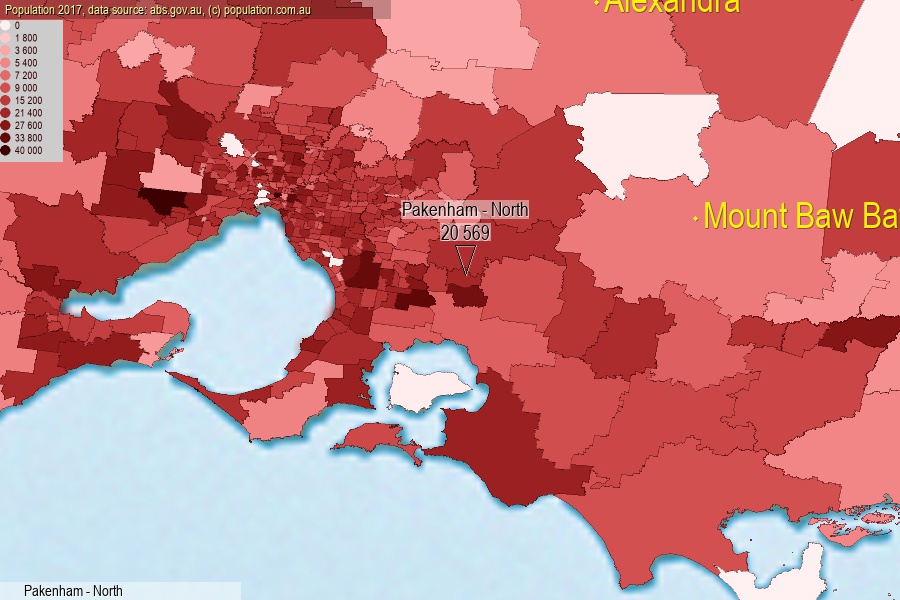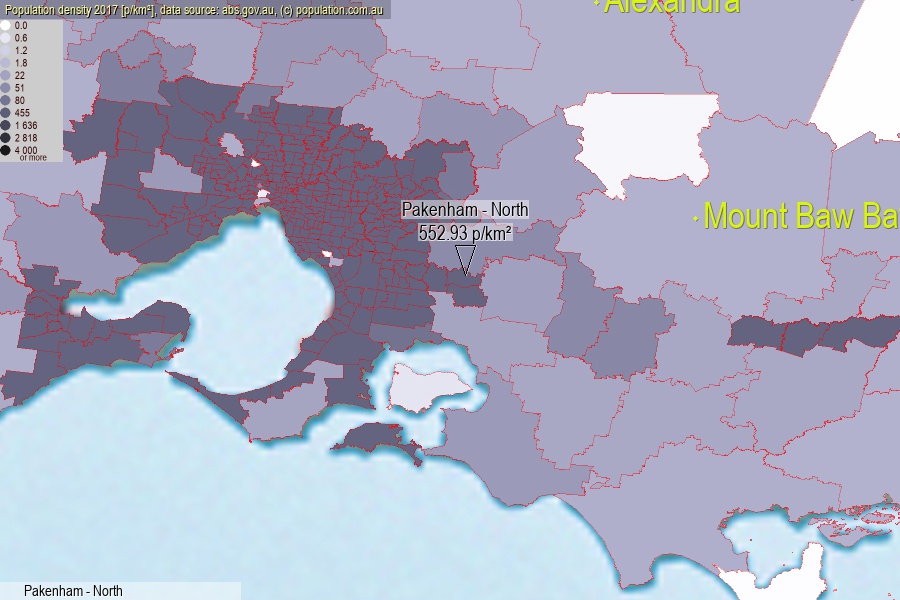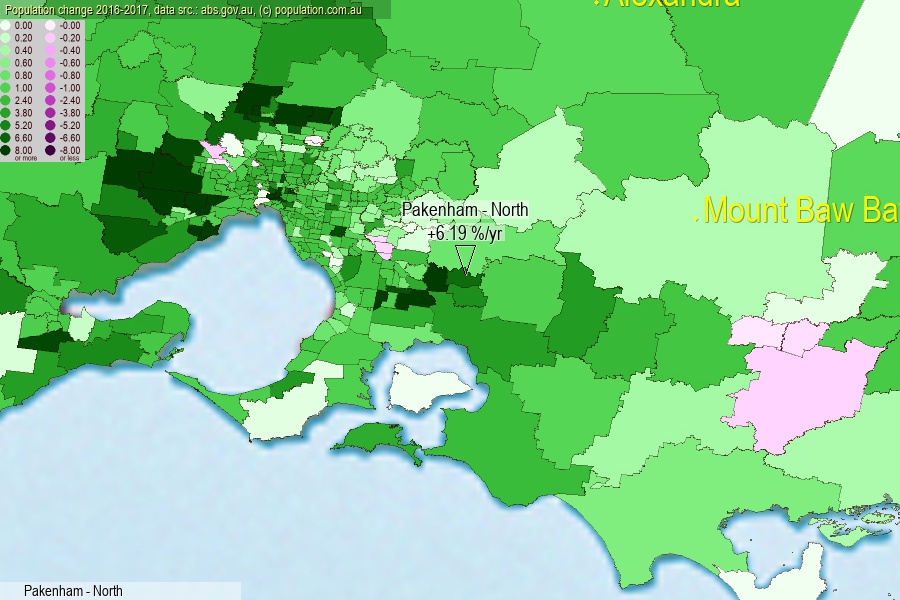 population.com.au
population.com.auLast official estimated population of Pakenham - North (as Statistical Area Level 2) was 20 569 people (on 2017-06-30)[2]. This was 0.08% of total Australian population and 0.32% of VIC population. Area of Pakenham - North is 37.20 km², in this year population density was 552.93 p/km² . If population growth rate would be same as in period 2016-2017 (+6.19%/yr), Pakenham - North population in 2025 would be 33 257. [0]



Click to enlarge. Pakenham - North is located in the center of the images.
Population [people], population density [p./km²] and population change [%/year] [2]
View borders » (new window) [4]
[1991-1992] +15.02 %/Yr.
[1992-1993] +12.23 %/Yr.
[1993-1994] +10.82 %/Yr.
[1994-1995] +8.90 %/Yr.
[1995-1996] +8.26 %/Yr.
[1996-1997] +4.42 %/Yr.
[1997-1998] +4.39 %/Yr.
[1998-1999] +5.13 %/Yr.
[1999-2000] +4.76 %/Yr.
[2000-2001] +5.13 %/Yr.
[2001-2002] +0.69 %/Yr.
[2002-2003] +2.83 %/Yr.
[2003-2004] +7.63 %/Yr.
[2004-2005] +1.38 %/Yr.
[2005-2006] +7.92 %/Yr.
[2006-2007] +8.21 %/Yr.
[2007-2008] +11.46 %/Yr.
[2008-2009] +13.32 %/Yr.
[2009-2010] +12.71 %/Yr.
[2010-2011] +10.72 %/Yr.
[2011-2012] +10.75 %/Yr.
[2012-2013] +9.62 %/Yr.
[2013-2014] +7.55 %/Yr.
[2014-2015] +6.48 %/Yr.
[2015-2016] +7.17 %/Yr.
[2016-2017] +6.19 %/Yr.
[0] Calculated with linear interpolation from officially estimated population
[1] Read more about SA2 and Australian Statistical Geography Standard (ASGS) on abs.gov.au
[2] Population data from Australian Bureau of Statistics (Population and density: 2017; change: 2016-2017)
[3] Digital Boundaries: Australian Statistical Geography Standard (ASGS) 2016.
[4] Border coordinates are simplifyed using Ramer-Douglas-Peucker algorithm.